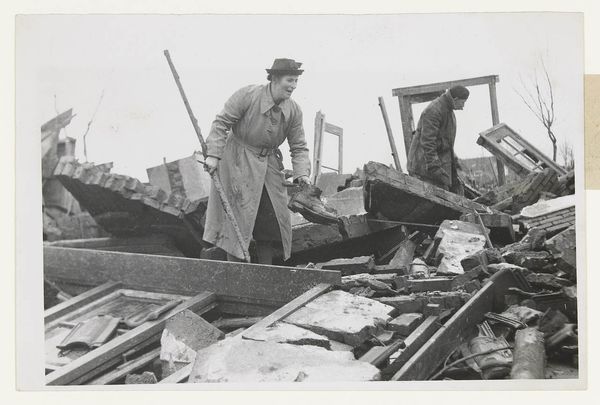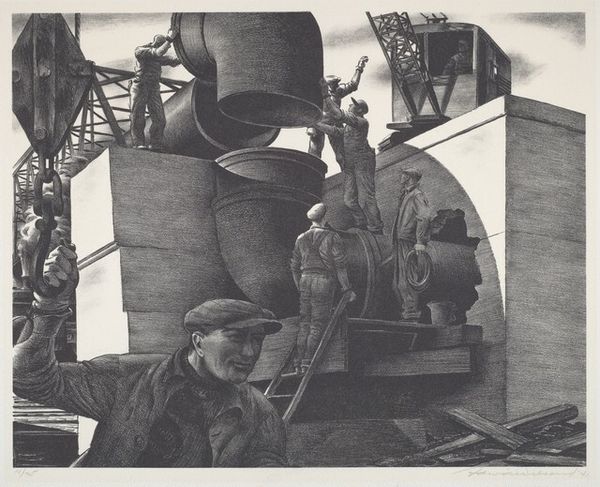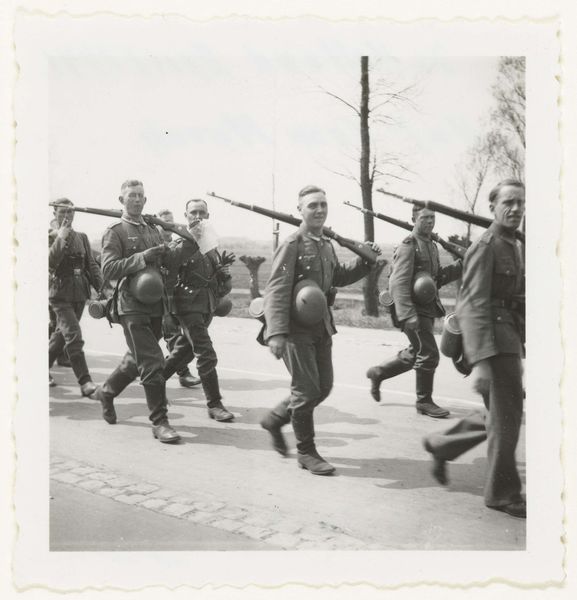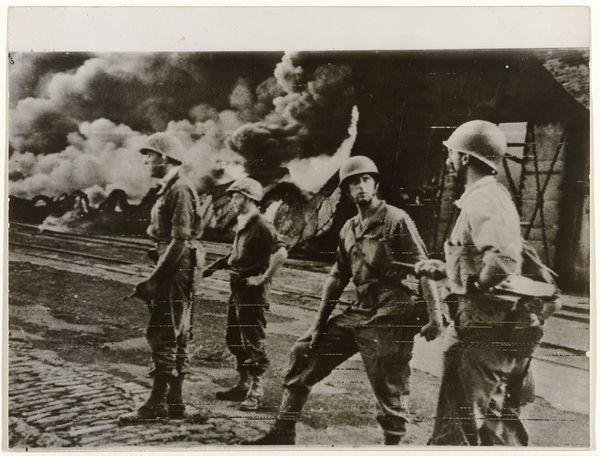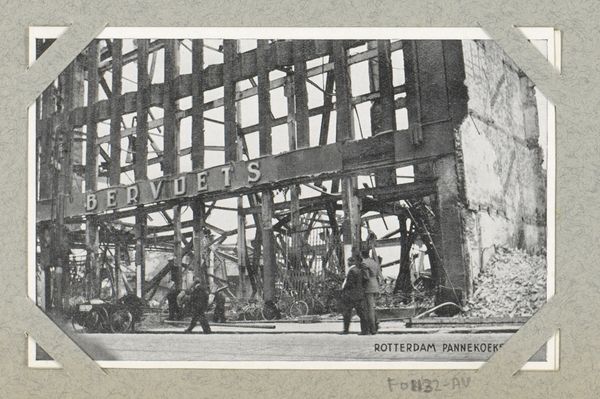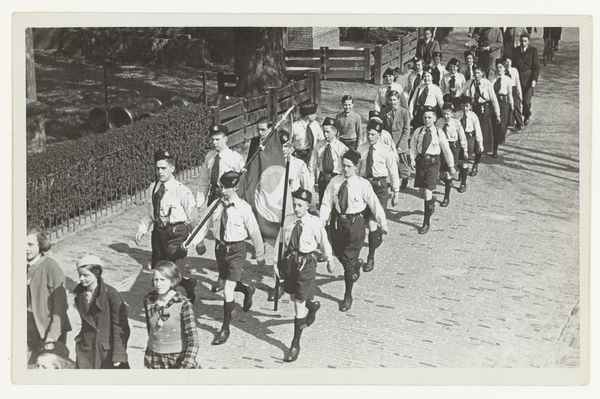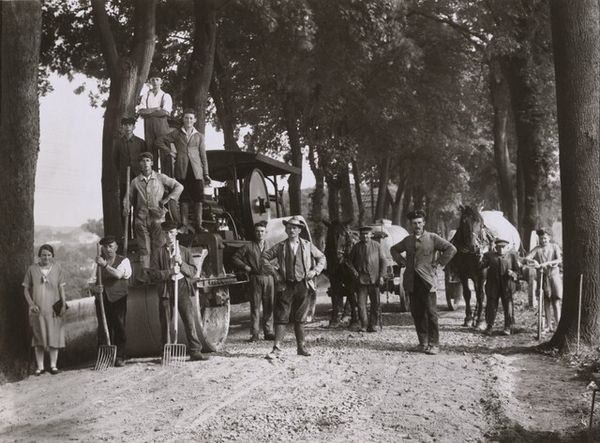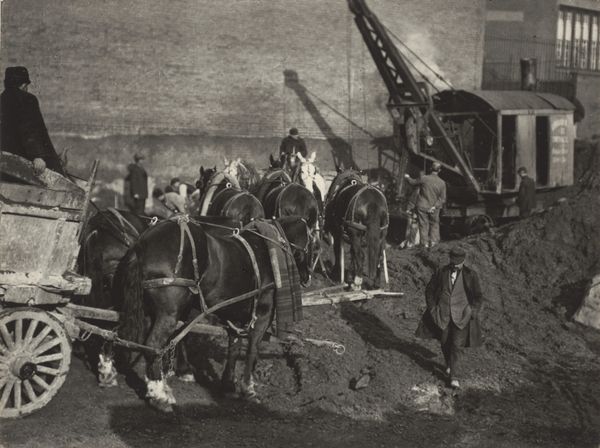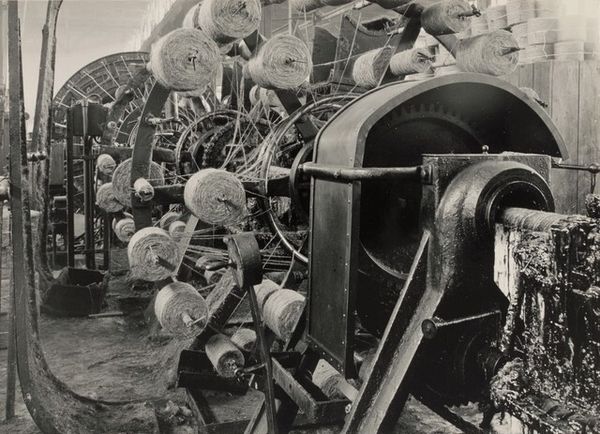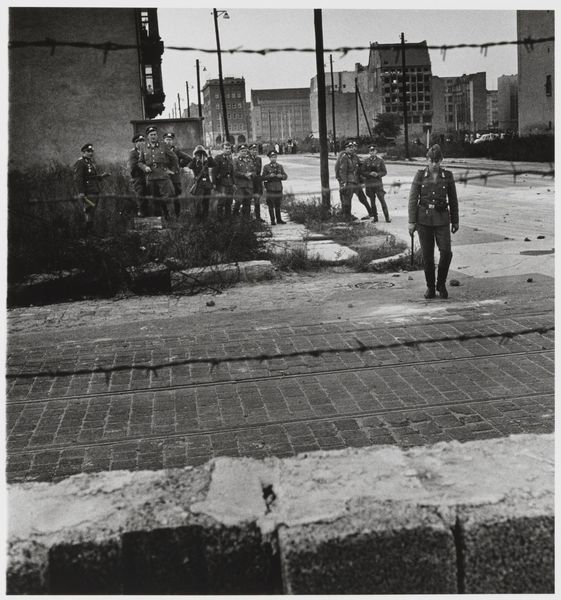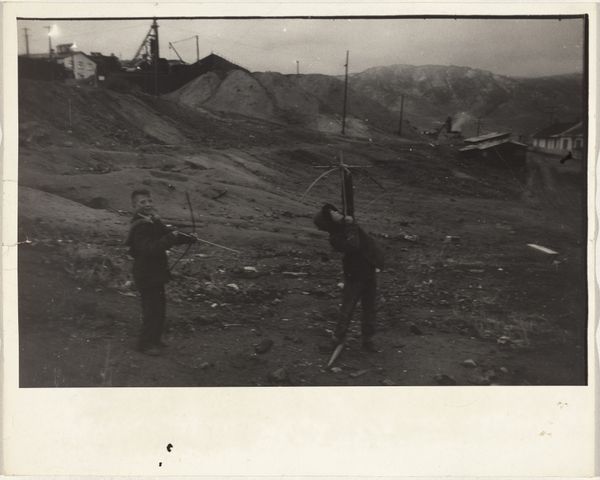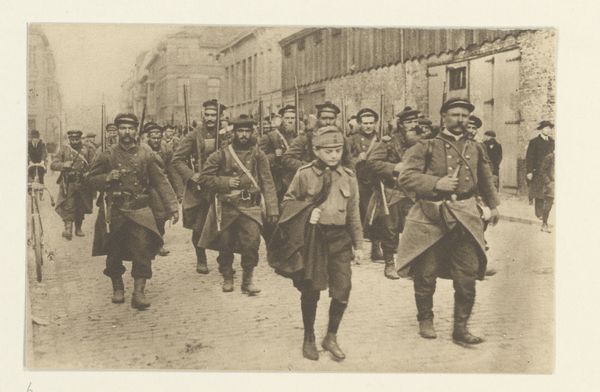
photography, gelatin-silver-print
#
portrait
#
war
#
soviet-nonconformist-art
#
social-realism
#
photography
#
group-portraits
#
black and white
#
gelatin-silver-print
#
monochrome photography
#
vehicle
#
history-painting
#
monochrome
#
realism
#
monochrome
Dimensions: image/sheet: 27 × 35.5 cm (10 5/8 × 14 in.) mount: 31 × 40.5 cm (12 3/16 × 15 15/16 in.)
Copyright: National Gallery of Art: CC0 1.0
Curator: What strikes me immediately about Georgi Zelma’s "Battle for Stalingrad, Partisan Fighters," likely created around 1942, is its raw, almost film-noir starkness. The high contrast and the sharp focus create a sense of immediate tension. Editor: And that tension is precisely the point. We're seeing a staged but incredibly evocative representation of Soviet resistance during a pivotal moment. Consider the historical weight of Stalingrad, the city's namesake an invocation for resilience during wartime, in itself an extremely powerful symbol of revolution. Curator: Absolutely, and these men—almost boys—aren’t posed as victorious heroes. There’s a weary determination etched on their faces. It feels more intimate than the grand narratives we usually associate with war photography. It avoids both glorification and victimhood. Editor: Instead, we get a fascinating blend of socialist realism and something far more psychologically resonant. They are armed, but they look far from imposing and victorious; instead their resolve comes across in their unity and determined movement towards something unknown. This also hints at the symbolic potential to resist destruction during dark times. Curator: Their weapons become extensions of their own stance. Look at the lighting—how it etches their determined countenances, all united, while casting long, angular shadows around them in the debris. This stark environment—are we looking at factory or building remains? Either would hold a certain significance during a major siege. Editor: A gelatin-silver print would afford the artist to emphasize specific tonal effects, bringing out granular details. Consider, the visual elements are less about portraying individual personalities and more about underlining their collective role within an important, mythologized battle. The choice of representing partisans – people resisting from within enemy lines, rather than organized army officials – lends it a touch of revolutionary heroism, albeit in a restrained style. Curator: And the use of black and white removes any possible visual distractions. We are asked to consider their actions, resolve and humanity, despite their looming circumstances. It avoids glorification but instills an ethos of sacrifice through unity. Editor: It invites contemplation of what it means to act collectively for an ideology. A piece designed for both documenting and mobilizing shared values during conflict.
Comments
No comments
Be the first to comment and join the conversation on the ultimate creative platform.
